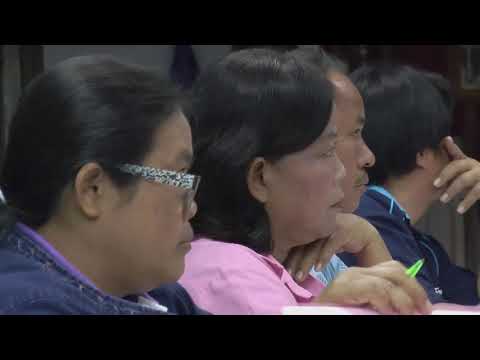
A new approach to water resource management based on community participation is tapping into local knowledge to protect Thailand's territory from the increasingly severe flooding driven by climate change.
Source: ADB.org
VO: Thailand – dynamic, productive, forward looking and for decades a country that has benefited from almost uninterrupted social and economic growth. But in the last decade the country’s development was partially impeded by the dramatic effects of global climate change. In 2011, the country experienced its worst flooding in more than 50 years.
SOT: Village Shopkeeper
Hua Leam Village, Ayutthaya
Thailand
The level of water was this high during the flood in 2011. The villagers couldn’t live in the village during the flood.
VO: For government agencies and development partners like the Asian Development Bank, it was a reminder that efforts to reduce climate change impacts needed to be prioritized.
SOT: Luxmon Attapich
Senior Country Economist
ADB Thailand Resident Mission
Integrated Water Resource Management and stakeholder participation are the two most important things.
VO: The issues to be addressed are numerous and complex.
SOT: Ladawan Kumpu
Deputy Secretaty-General
Office of the National Econo
In the 11th National Economic and Social Development Plan, we said a lot about water resource management because we know that water resource is a very important resource. It means lives of the people, occupation, agriculture, manufacturing, tourism all used water resources.
VO: Following the floods of 2011, coordination among the responsible agencies was essential in responding to water issues. Two technical advisory projects were developed. The first applied an Integrated Water Resource Management principle with local community participation to the upper Yom river basin; the second to the downriver UNESCO designated world heritage site of Ayutthaya.
SOT: Ruangrit Ngamlert
General Operation Assistant
Phrae Water Management Center, Thailand
The benefit of the Integrated Water Resource Management approach is it can cover all aspects of information and by considering all aspects together we can better manage water resources in the river basin.
SOT: Apichart Anuklarmphai
President
Thailand Water Resource Association
I think the problem currently is most of the big projects, they are initiated by the agencies themselves without much participation from the local people.
VO: By increasing public participation, local wisdom can be integrated into the River Basin Implementation Plan.
SOT: Sukwan Buamoon
Chief Executive of Ta-Phamok Sub-District Administration
Thailand
ADB workshop under this project has brought three sub districts of meta sub basin to work together and also integrate their water management plans.
VO: But in 2011 it was downriver where the impact of Thailand’s catastrophic floods were most acutely felt. Flood mitigation measures at the ancient city of Ayutthaya proposed under a co-project between the Asian Development Bank and UNESCO such as an increased of water retention areas and strengthening local community involvement are key components.
SOT: Pratheep Pengtakol
Director of the 3rd Regional Office of Fine Arts
Ayutthaya, Thailand
Local community participation is very crucial. As people are living with the historical site and they all belong to the people.
VO: Combining local knowledge with advanced technology is another solution for flood risk mitigation.
SOT: Gwang-Jo Kim
Director, UNESCO Office, Asia and Pacific Regional Bureau for Education
Bangkok, Thailand
Combining this cutting edge technology and the local knowledge we were able to come up with disaster risk mitigation plan for the World Heritage Society in the Ayutthaya.
VO: The challenge now is to involve local communities to effectively contribute to the implementation of an Integrated Water Resource Management plan to help protect Thailand amid the existential threat of global climate change.
